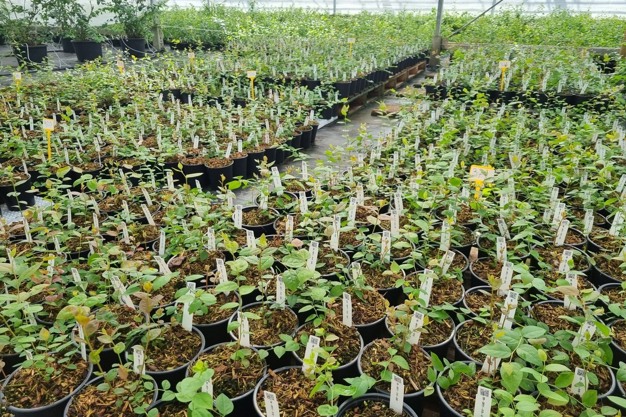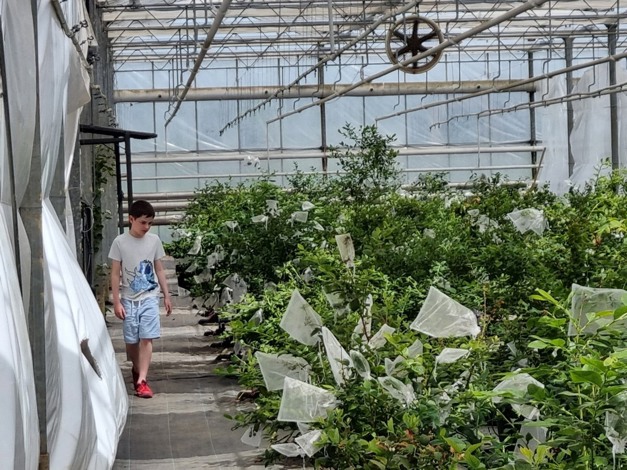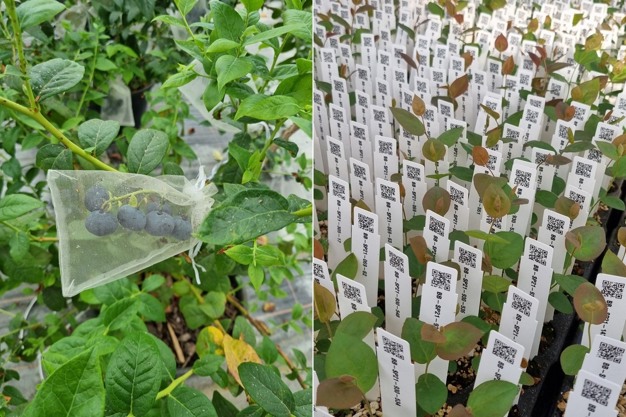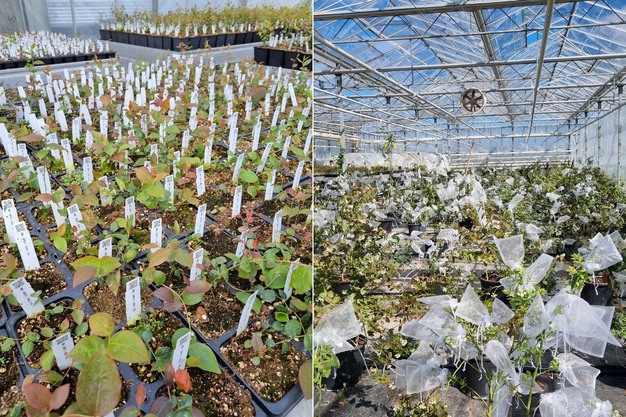Whereas 12,951 tonnes of fresh blueberries were exported from Peru in season 2015-2016, that figure was 224,889 tonnes in season 2023-2024. This makes Peru the world's largest exporter of blueberries for the third consecutive year, according to industry association Proarandanos. Peruvian berries find their way to a total of 31 destinations. The bulk of blueberries are exported to the United States, which in 2021-2023 was 123,000 tonnes, accounting for 55 per cent of total exports. Thirty per cent came to Europe: 69,000 tonnes, while Asia accounted for imports of 27,000 tonnes (12 per cent).
The huge export growth in less than 10 years, however, does not take away from the fact that there was a dip in exports in the 2023-2024 season, USDA reports. Due to climatic conditions - including a cyclone and warm winter temperatures due to El Nino - exports in 2023-2024 were 165,000 tonnes, 43 per cent less than in the previous season. Despite this, Peru remained the number one exporter of blueberries. In the 2022-2023 season, the Netherlands was the second largest importer of Peruvian blueberries, after the United States and ahead of China.

Season is speeding up
"The forecast for the current season is comparable to last year," says Horacio Ozer Ami Gimenez, co-owner of ByBlue, that is dedicated to blue berries with imports from amongst other origins, Peru. He sees that the blueberry production started slowly this season but is now speeding up. "Due to the shortness last year, producers wanted to extend the season and did not prune at the usual time in December. On top of that the whether conditions in the beginning of the spring were not favourable. Both aspects have caused the current season to start late."
Horacio expects blueberry volumes from Peru to be somewhere between the volume of last year and the volume of 2 years ago. "Production may not have recovered 100 percent, but it recovered quite a lot." Notwithstanding that, he mentions that the supply curve is complete different than it used to be. "The peak will be a bit less and more spread into the late part of the curve. That could be overlapping the first part of the Chilean blueberry season." The supply situation also impacts the pricing. "The price is extremely high, but I expect it to go down as the volumes grow in November and December. Later in the season I expect the prices to be balanced and reasonable for both growers and the market."

Developing tools
The production dip of Peruvian blueberries last season is down to the weather phenomenon El Niño, Horacio sees. "Last year was the first time that Peru experienced El Niño with this amount of hectares of blueberries and because of this high production volume the impact was much bigger than before. The previous version of the weather phenomenon was 8 years ago and back then the blueberry acreage was much lower. The good news is that we see that producers are developing tools to overcome this type of situation in the future."
An important aspect, because the Horacio sees that, despite extensive growth over the last years, the global blueberry market is still growing. "Depending on the market, the growth is between 8 and 10 percent and can even mount to some 20 percent in relatively new markets that started consuming blueberries in the few last years, like for instance India or Middle Eastern countries. But also in the south of Europe, in countries like Portugal and Spain we see a much higher blueberry consumption, compared to the past. So, growth is still a hot topic in the blueberry market."

Expansion of production
Where the consumption is growing, there also is room for expansion of production. Depending on the window of opportunity Horacio still sees possibilities in Peru. "Compared to other countries Peru has very stable climatological conditions, access to land and water. Moreover the market was developed by both private companies and the government. That helped a lot to expand the business worldwide. Also, Peru has a quite long producing window, between May and March. That gives the possibility to large companies and investors to invest in Peru and have the opportunity to scale up the business very quickly."
But on top of that Horacio observes quite some new production origins coming into the market as well. "We see growth in production still in South America, but also in Asia, Africa and Eastern European countries." Where blueberry production often starts for exportation, ByBlue sees that it also beneficial to develop the local market. For instance, in Poland. "About 90 percent of the blueberries from Poland were destined for the export market, but now we see an export of between 50 and 60 percent, where the remainder stays in Poland for local consumption."

Developing local consumption
Horacio sees that this development also helps to grow local consumption during the off-season. "People are getting used to their berries at a reasonable price during the local season and they want to continue their consumption of blueberries during the wintertime. Also, when a new area starts producing blueberries the infrastructure to process blueberries increases in that country. That creates an opportunity for local importers to import berries during the off-season and serve clients that they have during the local season."
And as production, local or otherwise, grows, that also entails that availability increases, coming with its own challenges, Horacio observes. "Because the availability is increasing every year, expectations are higher than they used to be, putting extra pressure on the specifications." It is where he sees that genetics – a field that ByBlue is active in as well – come into play. "Now we see a lot of variation between the origins in quality and taste. We hope that in the coming years, blueberry can be more stable and predictable in terms of consumption quality."
New genetics
Because of the rapid development in blueberry varieties, ByBlue observes that the plant rotation is getting higher. "Where in the past blueberry bushes where replaced after 10 to 15 years, that is now down to about 6 to 8 years because of new genetics with better yield and fruit quality. That makes production more dynamic and also more capital intensive."
Another aspect of production that is changing is the production system. "Where in the past blueberries were grown directly in the soil, we are now moving to a more intensive production in pots. Like that the same yield per hectare can be produced using only half the water and fertilizer, making blueberries more environmentally friendly than other fruits. That is good news for the business," concludes Horacio.
For more information:
ByBlue
[email protected]
